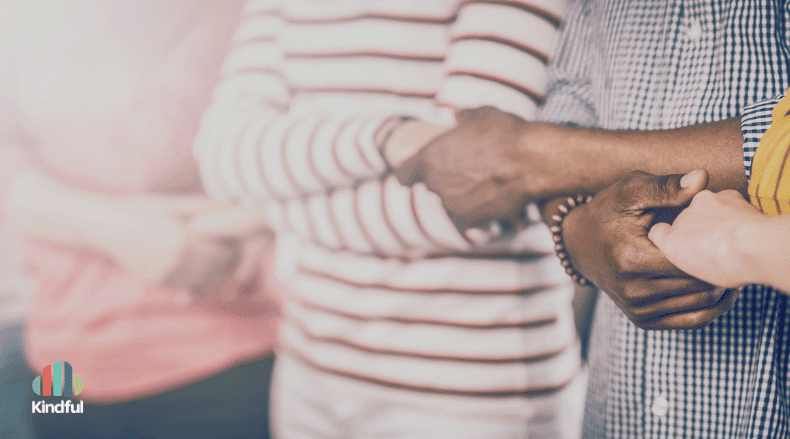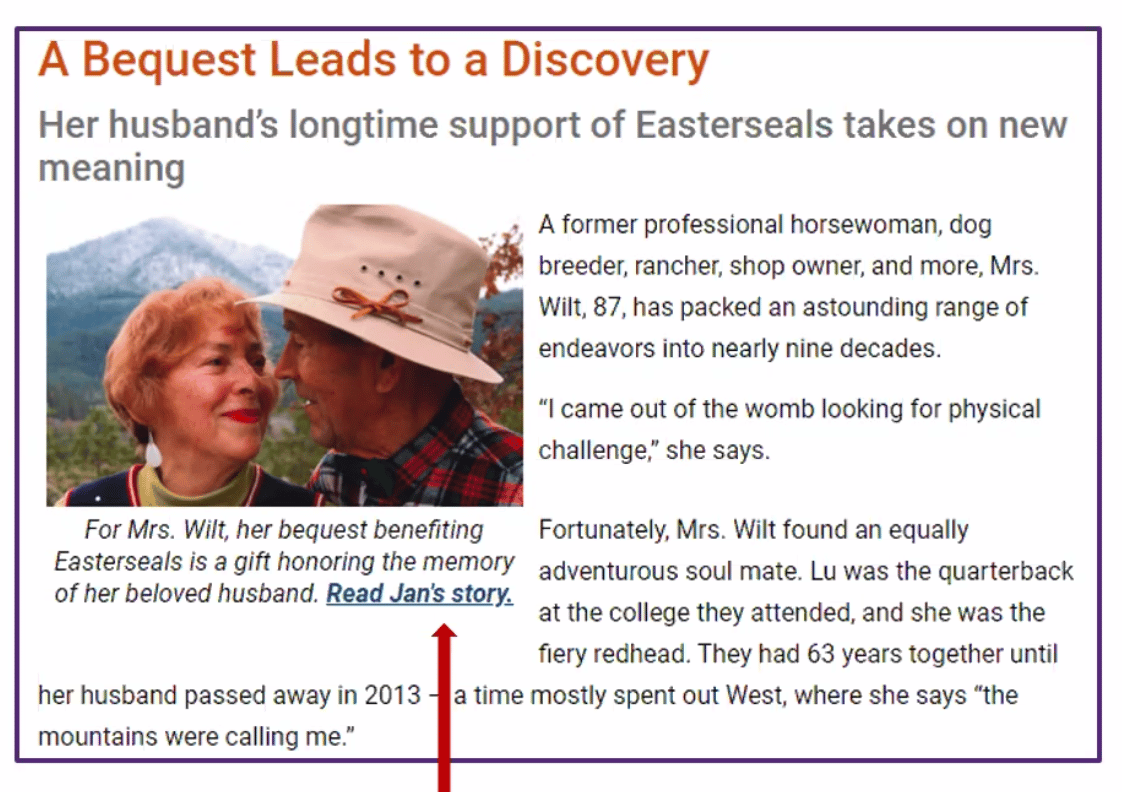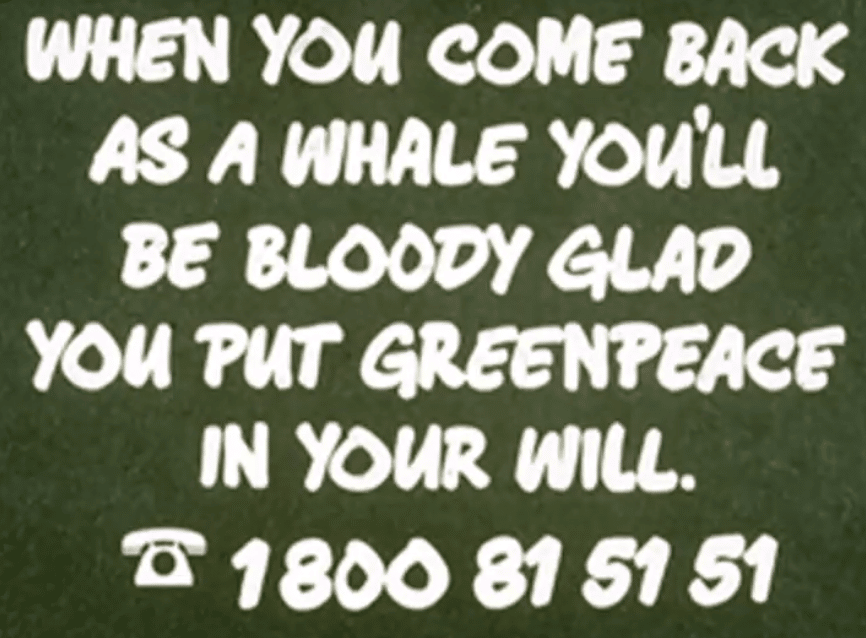5 Ways To Get Started With Legacy Giving

Legacy giving can be intimidating for smaller nonprofits, but even the smallest of shops can have a robust bequest program. Nonprofits of all shapes and sizes have supporters who desire to leave a legacy long after they pass away; and while some donors may write you into their will without being prompted to, they’re much more likely to do so if you ask them to.
In the U.S., the average major gift is around $5,000, while the average charitable bequest is around $32,000. Not only are bequests lucrative, but you may also be surprised how easy they are to market. The ROI (return on investment) can truly be immense!
Here are five ways to get started in building out your bequest program if your nonprofit has never dipped its toes in the legacy giving waters:
1. Segment your donor database to find “long-term loyals.”
If your nonprofit has donors who have been giving for many years, you have legacy prospects. “Long-term loyal” donors are much more likely to write you into their will than any other type of donor. In fact, it’s possible that some have already.
This isn’t just conjecture. The late, great Jerry Panas published his list of the top characteristics of bequests of donors that his agency had generated over the years for their clients.
The top five characteristics were:
- Length of giving to your organization (5 or more years of regular giving)
- Giving to you over a long period of time (giving may not be year after year, but gifts have been made over a long, extended period of time)
- Frequency of giving (monthly credit card donors, or those who give more than once a year)
- Is an active volunteer (at one time or is now a board member, or a volunteer in some manner)
- The family has been involved in some way with the organization (best if there is a long-time association)
It can be tempting to look for older wealthy donors in your database first. But those factors were at the bottom of the list.
In fact, according to Robert F. Sharpe, Jr., there is no correlation between either income or wealth with the likelihood of giving by bequest.
It’s loyalty. Your best prospects are those who have been loyal, long-term supporters (age, wealth, and childlessness certainly don’t hurt, though). And while not every nonprofit has wealthy donors, most have loyal donors.
Having visibility into these donors is a good idea even outside the context of legacy giving. They’re excellent volunteer, peer-to-peer fundraising, and committee member prospects!
 2. Identify those who have already given or committed to leaving a bequest.
2. Identify those who have already given or committed to leaving a bequest.
Even if your organization isn’t actively promoting bequests, it’s possible that you’ve already received some bequests, or have heard from current, living donors that they have written you into their will. Consider profiling these supporters in your marketing materials. Current donors are often times the best people to speak to prospective donors. Hearing about why they think your organization is valuable enough to support can be more powerful than hearing it from the organization directly.
3. Create a dedicated legacy giving page on your website.
Having a clear and dedicated call to action on marketing materials for prospective legacy donors to get more information will improve the conversion rates of those materials.
For example, a webpage with a URL like www.nonprofit.org/legacy can be the dedicated home for your legacy case for support and house testimonials from current and past legacy donors.
If you don’t yet have a dedicated legacy giving page on your website, or want to improve an existing page, check out this webinar from Ligia Peña, CFRE on how to get started.
 4. Weave legacy giving messaging into existing marketing materials.
4. Weave legacy giving messaging into existing marketing materials.
While dedicated and targeted messaging is always best, there might be others in your community who could be good legacy giving prospects now or in the future. Consider adding light touches to existing communications, like newsletters, acknowledgements, email signatures, and even business cards, such as “Please remember us in your will or estate plans” or “Leave a legacy for future generations.”
Then, consider sending one letter annually that solely promotes legacy giving. Sending this letter to your entire database isn’t necessarily bad, but the more targeting you can do, the better. The best recipients for this letter include “long-term loyal” donors, those you know who may be updating their will (such as new parents), as well as supporters with particularly high engagement (such as making donations and volunteering).
According to the Partnership for Philanthropic Planning, donors who received a letter directly asking for a bequest were 17x more likely to give than donors who were not asked. For tips on how to craft your legacy case statement, check out this webinar from legacy giving expert Lori Kranczer.
You don’t have to craft complicated content that invokes lawyers, or estate planning, or charitable remainder trusts. It’s simply making the donor aware of the opportunity to leave a legacy, or open up a dialogue as to what they might want their legacy to be. The “how” can come later (and it will, so be prepared); but your marketing material should serve as a spark, not a as legally-binding contract.
5. Don’t let current events stop you.
It can be tempting to stray away from topics ostensibly concerned with death in times of crises, like a global pandemic or even a localized natural disaster. Bequest marketing strikes some as off-putting even in relatively “normal” times. But avoid promoting bequests at your own peril! Not only do they generative massive ROI, but they’re also a subject that donors are comfortable with.
Pre-pandemic research by Dr. Adrian Sargeant and Dr. Elaine Jay found that 88.7% of donors indicated they believe it is appropriate for nonprofits to ask for legacy gifts. The 2021 Giving USA report, which analyzed giving trends across all of 2020, found that bequest giving actually grew by 10.3% over 2019. It may not surprise you to learn that Google searches for wills and other estate planning terms increased in 2020. Finally, Penelope Burk found in her 2021 donor survey that 53% of respondents expect to give the same amount in 2021 as they did in 2020, while 26% plan to give more. The generosity and capacity is out there; you just have to take action!
You’ve likely heard this proverb: ‘The best time to plant a tree was 20 years ago. The second best time is now.’ It’s particularly germane to the topic of legacy giving. The longer you wait to get started, the longer you will have to wait to reap the benefits. It won’t happen overnight, but in the future your service recipients will sure be glad you put the effort in!
Schedule a live demo with Bloomerang, and we’ll show you how easy it is to create and automate reports, utilize online and offline fundraising tools, quickly integrate and access all your data, and ultimately create more time to engage your donors.